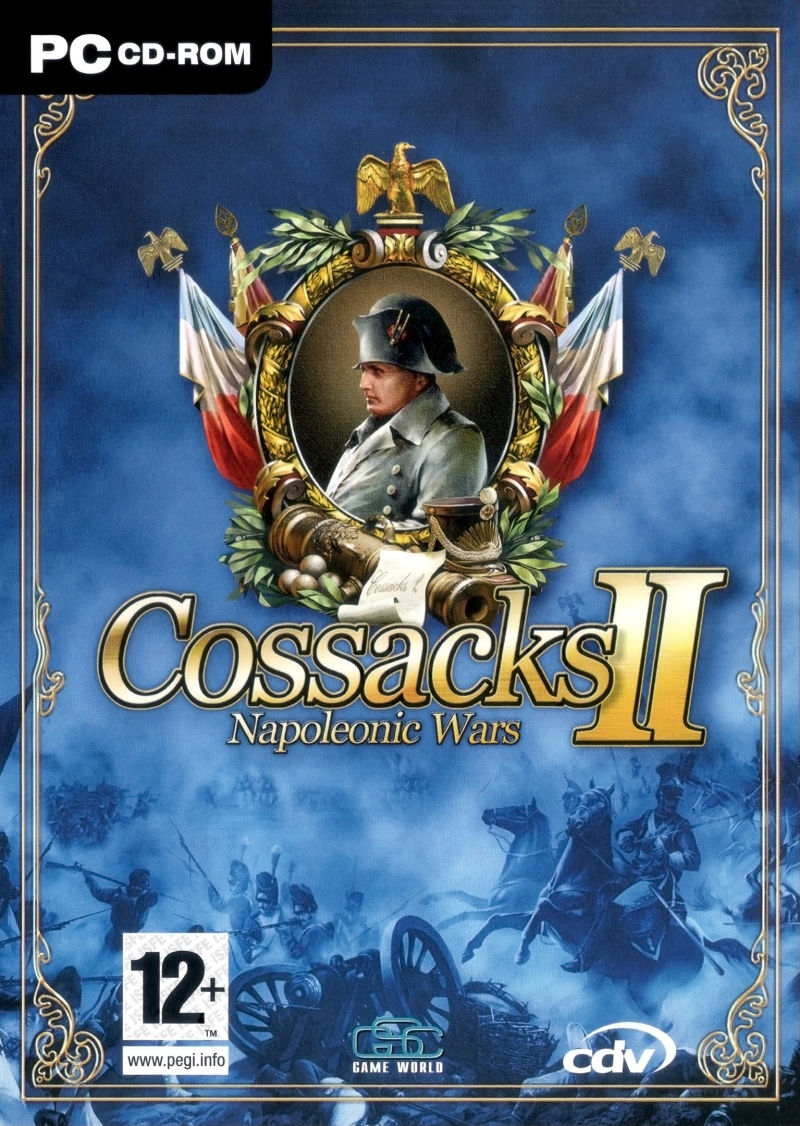

While most real-time strategy games tend to stick to either the future or WIII as their setting, the latest offering from CDV tries something few others have: it takes place in a Napoleonic-era setting. Some might wonder “why bother with this setting?” After all, aren’t most real-time strategies the same? To answer those folks, we’ll take you through the game as best as we can, providing a walkthrough of what exactly is different about this game.
First off, the Napoleonic era was decidedly low-tech. Your best handheld weaponry was the inaccurate musket, followed up by the close-range bayonet. Talk about forcing you to think about your tactics…if you miss with a musket barrage, it’s going to take seemingly forever to reload those suckers and get a fresh shot off. In that time, the enemy may have brought his artillery to bear, or he may have unloaded on your formation with a load of well-aimed (well, better aimed than yours) musket fire. Or worse, the enemy might just rush into your formation and unleash a wholesale fixed-bayonet slaughter. Now you can see why only the best tacticians should step up to the plate in Cossacks II.
The game isn’t just hung up on the direct combat elements, though, because troops in that era were heavily affected by their leaders, supplies (or lack thereof) and fatigue. Ignore any of these elements, and you will pay dearly on the battlefield. For example, troops prefer to march on nicely packed roads, and by forcing them to travel long distances across choppy terrain, they’ll tire more quickly and suffer a drop in morale. A physically fatigued army is less likely to follow orders, stay in formation or hang around once the muskets start blasting rounds across the battlefield.
Another example is the requirement to maintain formations. Formations were the only way a good general could control his troops, as he’d marshal the troops into an orderly group and keep them that way. A “formed” group fought better, given that they were in-sync with one another and could more easily hear commands. In Cossacks II, if you don’t form up your troops, they’ll still fight, but at such a low level of efficiency that you might as well have them kill themselves before even entering the battle.
Napoleonic battles were fought on a massive scale, with thousands of soldiers in formation blasting, stabbing and blitzing one another. So it’s only appropriate that the graphics engine in Cossacks II: Napoleonic Wars be beefy enough to handle huge combat actions. While huge battles may get somewhat difficult to control, the graphics engine handles them capably, rendering full detail of every unit in the fight, even those sad little men who have to try and reload their weapons while getting blasted by the enemy. Details are everywhere, from bored soldiers cleaning their weapons to cavalry riding into a massive battle with swords and spears ready for action. At times we did notice the visuals got a touch blurry, but for the most part, all the action and gore is rendered in full detail.
If you’re looking for something a bit more than just hacking up the enemy on the battlefield, Cossacks II features a special “Battle for Europe” mode in which you play the role of diplomat in a turn-based strategy game. Each turn, you can move your general around Europe, striking deals to protect neighbors, attacking said neighbors, or playing a nasty game of sabotage. Sabotage is handy as it weakens the enemy, softening them up for your impending invasion. Sabotage actions range from poisoning local wells (poisoned water slows down the creation of new troops) to blowing up ammo dumps. A destroyed ammo dump can be a royal pain, as it takes multiple resources (gunpowder and iron) to create more ammo. So if you lose an ammo depot, you end up spending more time gathering the assets needed to create more ammo, in turn losing time that should be spent building more structures.
Speaking of resources, the game takes 99 percent of the resource development tasks out of the hands of players. Rather than have you spend tons of time scavenging resources and less time enjoying the game, Napoleonic Wars makes it as easy as clicking on a peasant and sending him toward the targeted resource. Need wood? Send a peasant into the forest, and he’ll take care of the rest. The need for peasants adds another layer of strategy to the game, since a loss of peasants in a battle is equal to the immediate loss of any resource gathering.
Battle for Europe also contains some diplomatic aspects, as you can choose to form allies, develop trade routes and sign non-aggression pacts. Fail to spend some time playing the diplomat, and you’re going to quickly be looking down the barrel of the muskets of every other nation in the game. The Battle for Europe mode isn’t as deep as it could be, but it’s still an enjoyable addition to what would otherwise be a pretty standard RTS.
Only a few games have taken on the Napoleonic era this year, and Cossacks II is the first we’ve had the pleasure of trying out. While it’s not a huge departure from the RTS formula, it’s still a good game and worth picking up if you enjoy real-time strategy and are looking for something new.
Gameplay: 8
Takes into account everything about the era, and the Battle for Europe is a nice strategic addition.
Graphics: 7.9
A competent graphics engine that supports some pretty large-scale battles
Sound: 7
About average.
Replay: 7.5
Multiple campaigns keep the game fresh for quite some time.
Overall: 7.9
While not the most exciting title, it’s still enjoyable and a refreshing change from all the WWII RTS’ out there

INFORMATION ABOUT THIS CONTENT:
Originally posted: dailygame.net (LINK) (ARCHIVED)
Date of publish: 20.06.2005
Author: Craig Falstaff
Language of publish: english